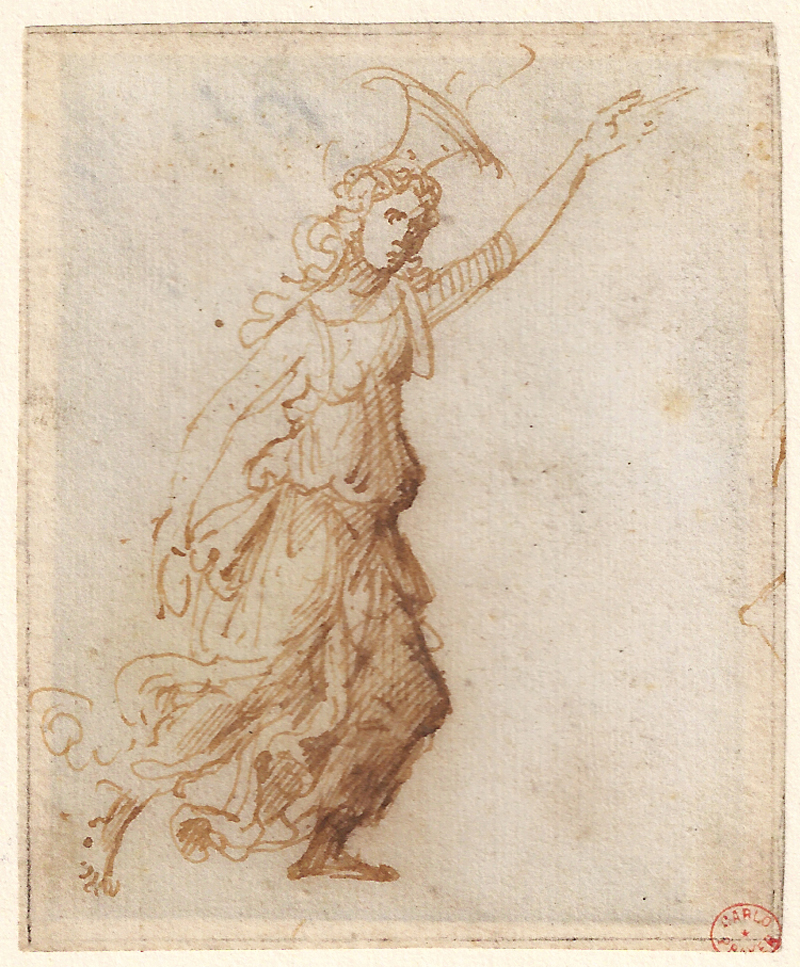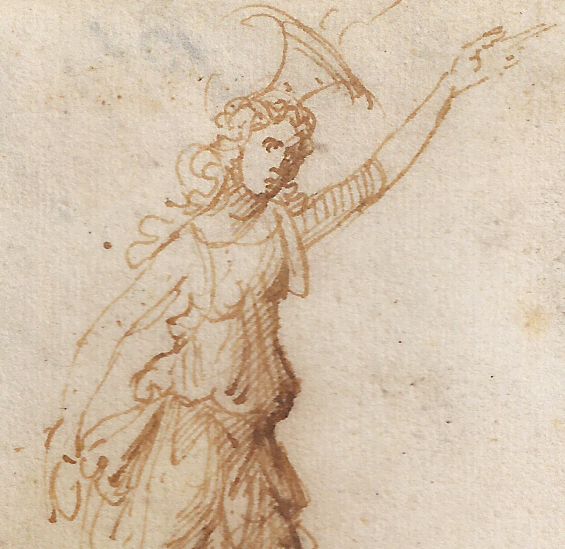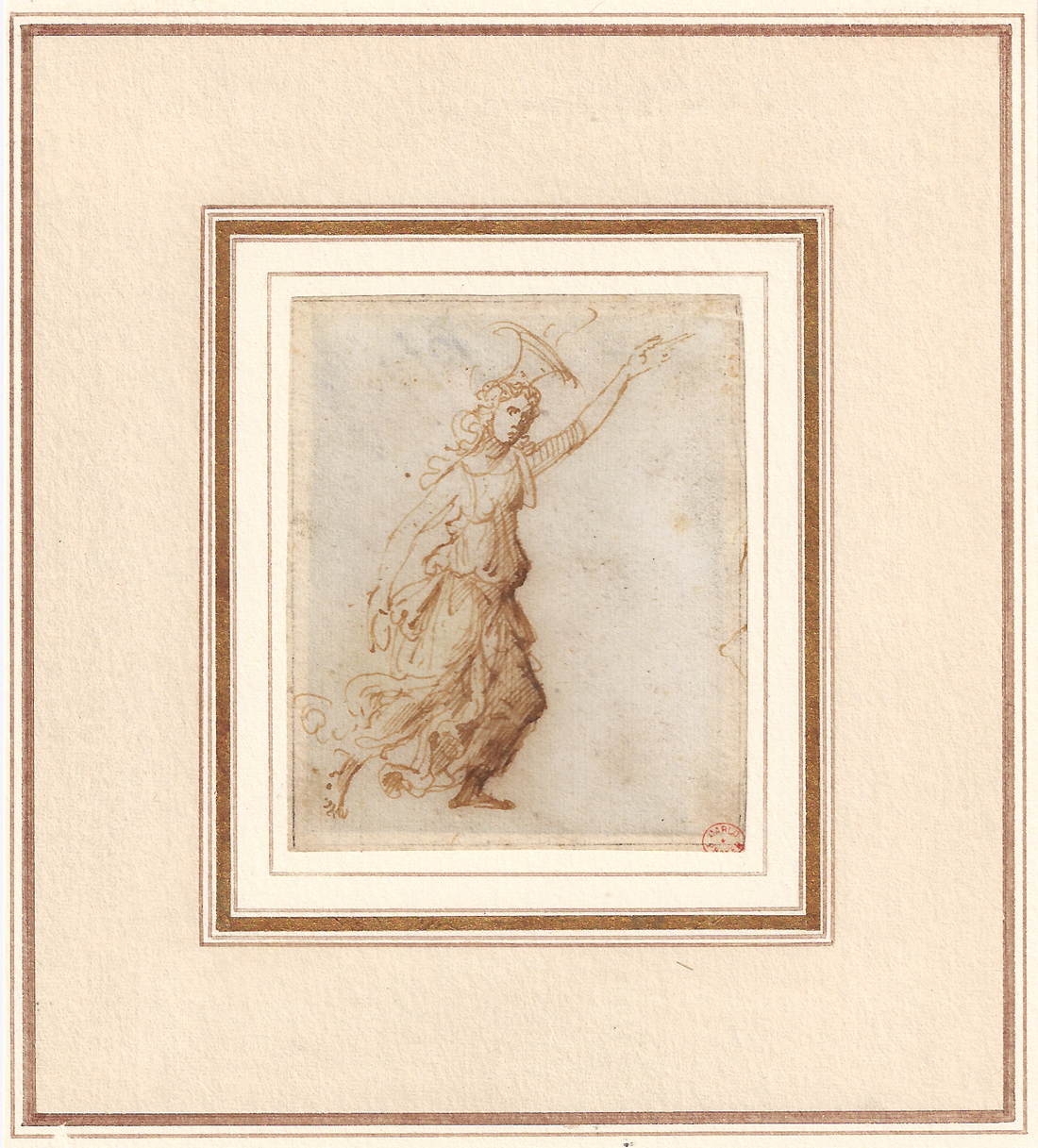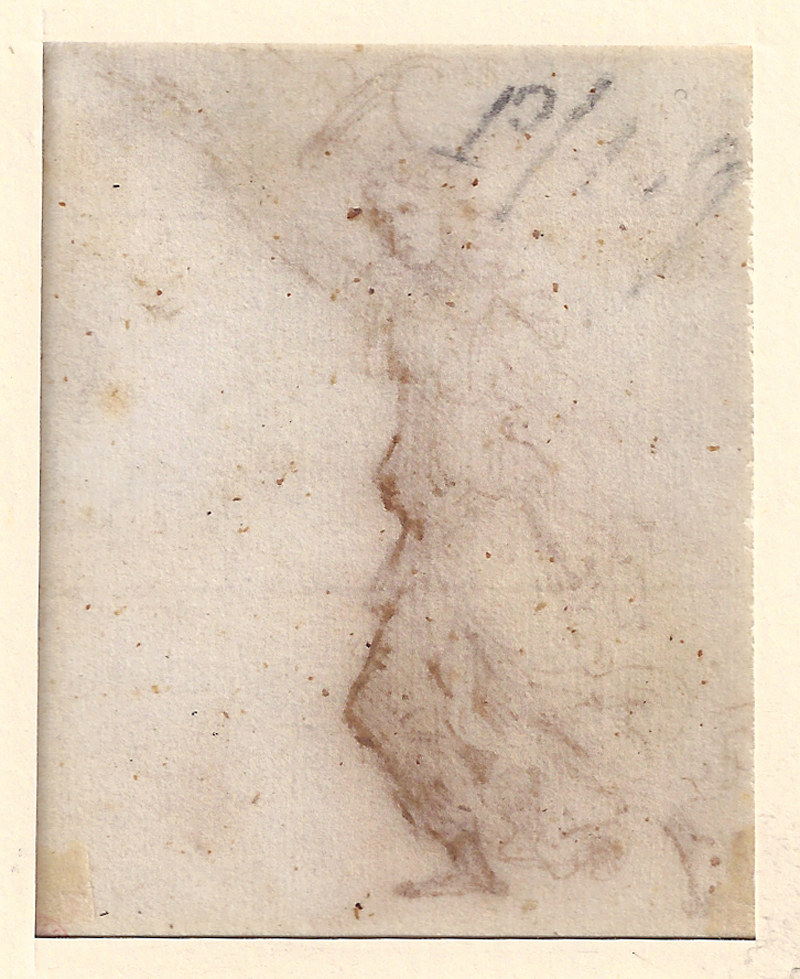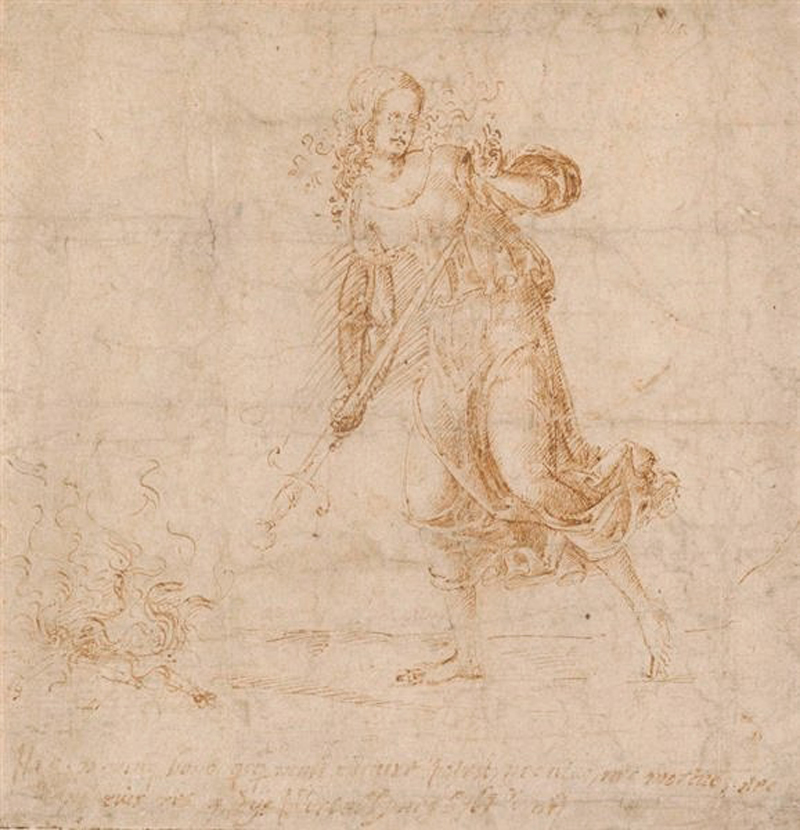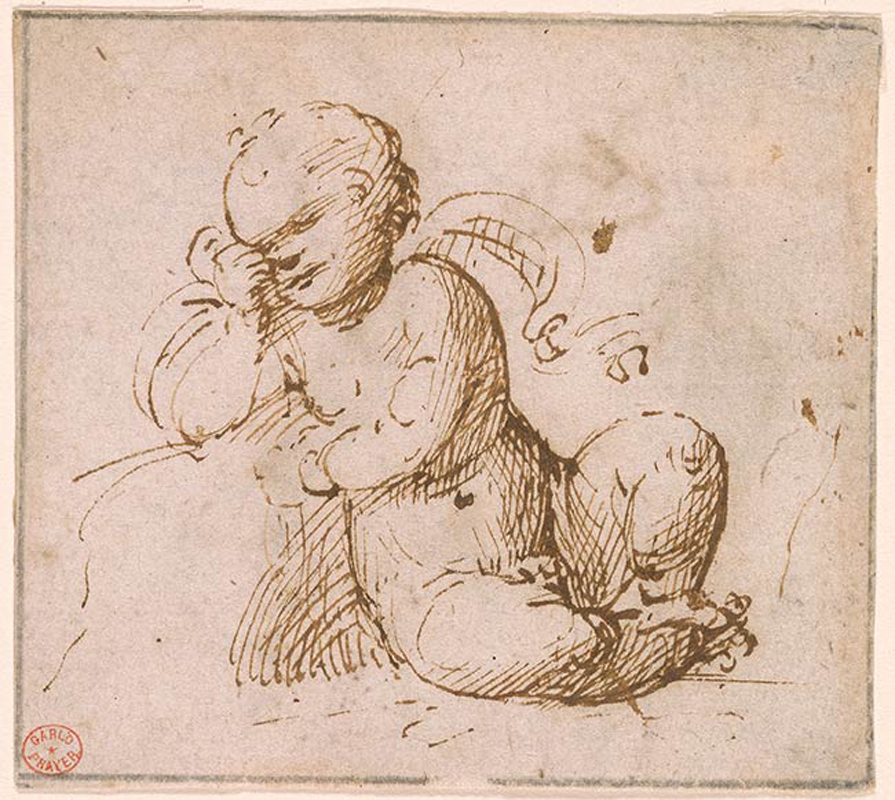MARCANTONIO RAIMONDI (Arguis, c.1470/80 – 1534 Bologna)
Marcantonio Raimondi (Arguis, c.1470/80 – 1534 Bologna)
Study of an Allegorical Figure
Executed c. 1505
Pen and brown ink, brown wash, graphite framing lines, 73 x 60 mm (2.9 x 2.4 inch)
Provenance
- Capitano Carlo Prayer (1826–1900), Milan (Lugt 2044)
- Giancarlo Baroni; his sale, Sotheby’s, New York, 29 January 2013, lot 76, repr.
- Private collection, Paris
***
Marcantonio Raimondi was the most important engraver of the Italian Renaissance.1 He pioneered the reproduction of works in art through engravings, and is considered the founder of the reproductive print. His corpus of more than three hundred engravings is based on the designs of other artists, including Michelangelo and most notably Raphael (1483–1520), whose fame is partly based on Marcantonio’s engravings. After studying with a Bolognese painter, Raimondi was in Venice by 1506. There he became Albrecht Dürer’s most prolific copyist – though not by consent. Dürer brought successful legal proceedings against Raimondi, but Dürer’s varied linework continued to inspire Raimondi for life.
In Rome by 1510, Raimondi created a financially and artistically successful business, founding a school of engravers who could accurately reproduce works of art. His style matured into a system of hatching and highlighting, concentrating on essential areas of shadow that clearly articulated forms. By 1513 Raimondi focused on engraving Raphael’s works, while Raphael’s assistants handled printing and marketing. After Raphael’s death in 1520, Raimondi continued engraving works by his students and assistants, notably Giulio Romano. Around 1524 Raimondi was briefly imprisoned by Pope Clement VII for making a series of erotic engravings after Giulio’s designs, I Modi. Following this disgrace, Raimondi was forced to ransom himself from the Spaniards during the Sack of Rome in 1527. He departed the city a beggar and left no further trace.
This very characteristic study in pen and ink by Marcantonio Raimondi is stylistically close to several discussed by Konrad Oberhuber in his article on the artist’s early works.2 It is especially close in handling to the figure of Dido, now in the Staatliche Kunstsammlungen, Dresden (fig.), which Oberhuber associated stylistically with the running princess in Raimondi’s engraving St. George and the Dragon, datable c. 1505.3 The figures share the same fluidity in the use of the pen and the close cross hatching as well as an overall elegance in the depiction of the drapery. This sheet and others mentioned in Oberhuber’s article come from the collection of Captain Carlo Prayer, who collected in Milan in the second half of the 19th century, and they all bear his collector’s mark. They were once part of a dismembered sketchbook and some were sold at Christie’s in two sales in the late 1980s.4 Our drawing, which can possibly be identified as Tyche (or Fortuna), the goddess of luck, can also for instance be compared to Raimondi’s Sleeping Putto in the Morgan Library in New York, again from Prayer’s collection (see fig.).5
SOLD
1. For the artist, see: K. Oberhuber, The works of Marcantonio Raimondi and of his school, The Illustrated Bartsch, New York 1978 and L. Pon, Raphael, Dürer and Marcantonio Raimondi: Copying and the Italian Renaissance Print, New Haven 2004
2. K. Oberhuber, ‘Marcantonio Raimondi: gli inizi a Bologna ed il primo periodo romano’, Bologna e L'Umanesimo 1490-1510, exh. cat., Bologna, Pinacoteca Nazionale, 1988, pp. 76-78.
3. Op. cit., p. 76, fig. 37 (Dido).
4. Christie’s, London, 5 July 1988, lots 1-7 and Christie’s, London, 6 December 1988, lots 1, 2. All came from the collection of Juan and Felix Bernasconi.
5. Pen and brown ink, 73 x 81 mm, inv. no. 1992.149; K. Oberhuber and D. Walker, Sixteenth Century Italian Drawings from the Collection of János Scholz, exh. cat. Washington, D.C. (National Gallery of Art) and New York (Pierpont Morgan Library) 1973, no. 44, repr.
